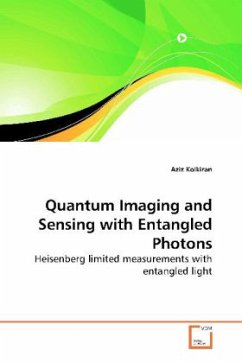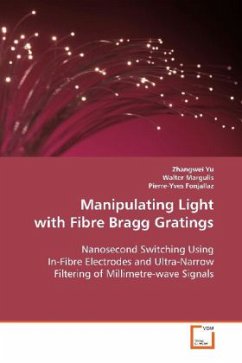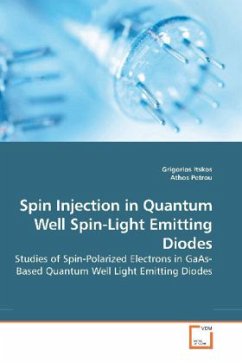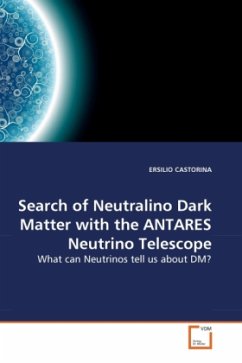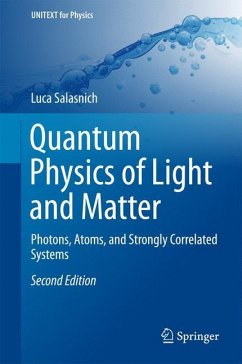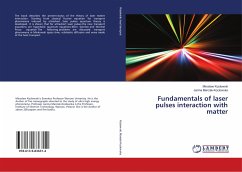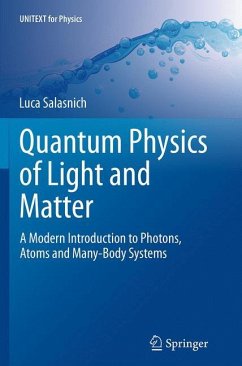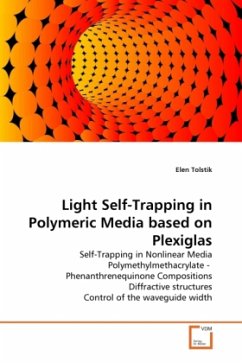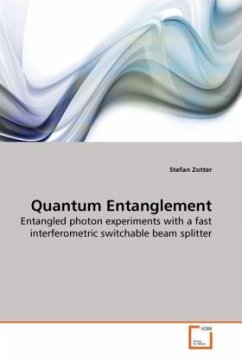
Quantum Imaging with Multiphotons and Light-matter Interaction
Narrowband biphoton generation, quantum imaging with multiphoton entanglement, quantum memory with nonclassical light
Versandkostenfrei!
Versandfertig in 6-10 Tagen
45,99 €
inkl. MwSt.

PAYBACK Punkte
23 °P sammeln!
Quantum entanglement has recently attracted muchattention because its unique properties provide novelapplications, such as quantum computing and imaging, beyond conventional techniques. To realize these advancements, one has to have a reliableentanglement-generation source, master its physicalproperties, and understand light-matter interaction.This book aims at addressing such issues.Untilizing momentum-momentum correlation of biphotons, quantum imaging was initiated with photons created from spontaneous parametric down-conversion (SPDC). In this book, an alternative biphoton source - Raman-EI...
Quantum entanglement has recently attracted much
attention because its unique properties provide novel
applications, such as quantum computing and imaging,
beyond conventional techniques. To realize these
advancements, one has to have a reliable
entanglement-generation source, master its physical
properties, and understand light-matter interaction.
This book aims at addressing such issues.
Untilizing momentum-momentum correlation of
biphotons, quantum imaging was initiated with
photons created from spontaneous parametric down-
conversion (SPDC). In this book, an alternative
biphoton source - Raman-EIT (electromagnetically
induced transparency) generator is introduced. The
application in imaging is considered.
To gain further insights into quantum imaging and
lithography, we extend imaging with multiphoton
entanglement. Specifically triphoton imaging with a
W state is studied in details.
To perform quantum computing and communication
protocols, one key element is quantum memory. In
this book, the feasibility of such a memory with use
of nonclassical SPDC light in an EIT system is
analyzed at the single-photon level.
attention because its unique properties provide novel
applications, such as quantum computing and imaging,
beyond conventional techniques. To realize these
advancements, one has to have a reliable
entanglement-generation source, master its physical
properties, and understand light-matter interaction.
This book aims at addressing such issues.
Untilizing momentum-momentum correlation of
biphotons, quantum imaging was initiated with
photons created from spontaneous parametric down-
conversion (SPDC). In this book, an alternative
biphoton source - Raman-EIT (electromagnetically
induced transparency) generator is introduced. The
application in imaging is considered.
To gain further insights into quantum imaging and
lithography, we extend imaging with multiphoton
entanglement. Specifically triphoton imaging with a
W state is studied in details.
To perform quantum computing and communication
protocols, one key element is quantum memory. In
this book, the feasibility of such a memory with use
of nonclassical SPDC light in an EIT system is
analyzed at the single-photon level.



